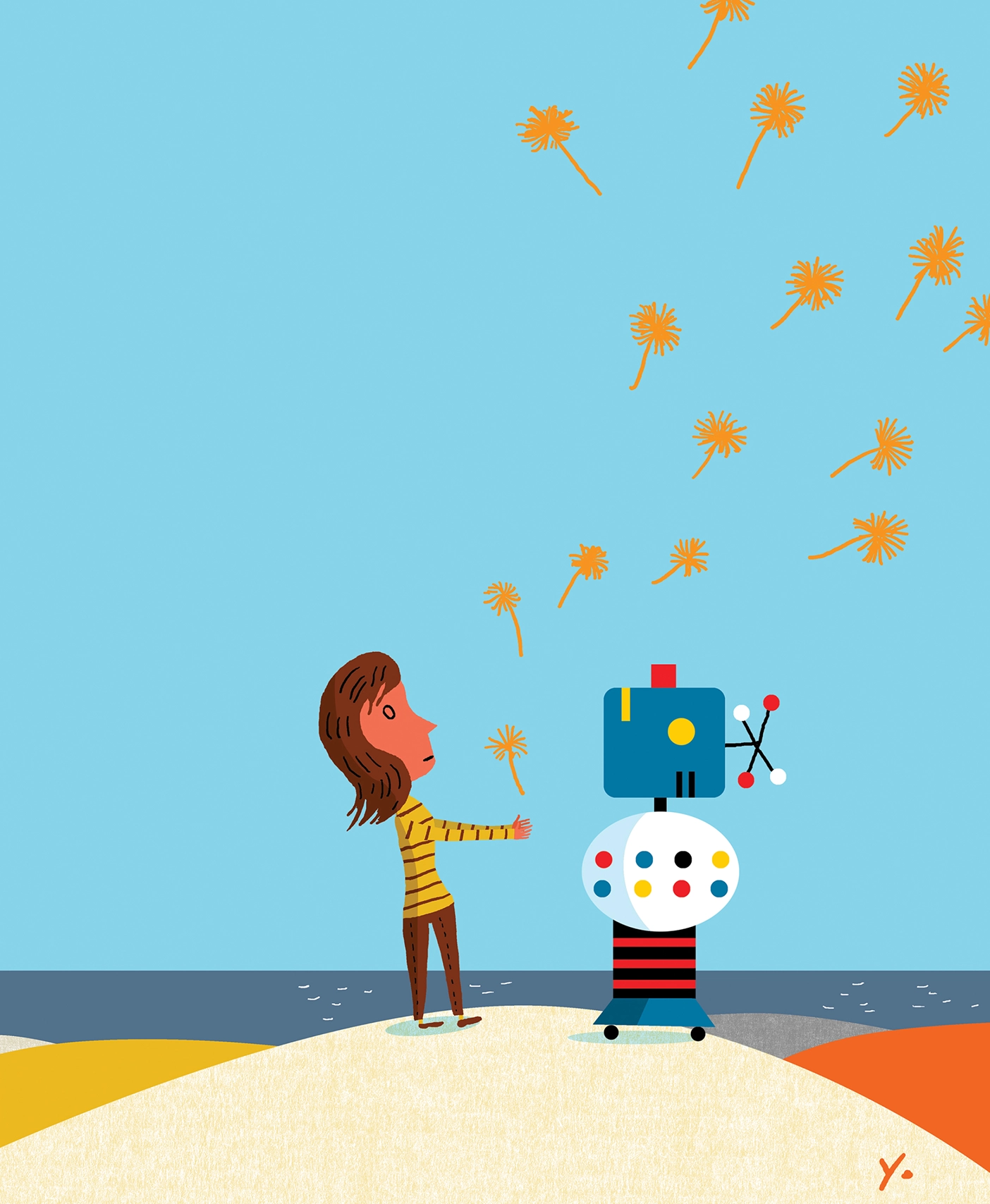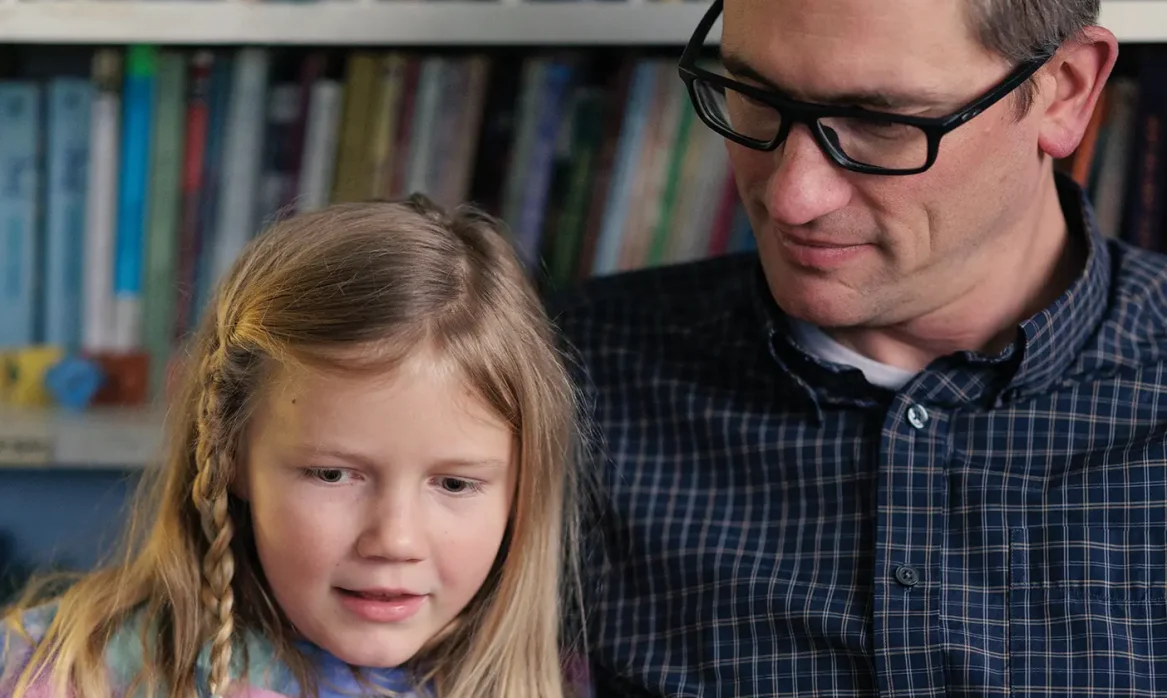How to help kids use artificial intelligence and maintain authentic connections.

“Alexa, are you my friend?”
It’s an innocent question. And for parents raising kids in the age of AI, it’s a question worth discussing.
From voice assistants and smart toys to AI-powered homework apps and personalized YouTube recommendations, artificial intelligence has become part of our homes and our children’s routines. But beyond helping kids spell tricky words or find fun facts about kittens, AI is changing the way they communicate, relate, and even think about relationships.
“Because AI tools can interact with us in a way that feels human, people—kids included—may start to develop different relationships with technology than they used to,” says BYU political science professor Ethan C. Busby (BA ’13). “And many will rely on AI to get information and learn about the world.”
Busby is part of a BYU team studying how AI impacts human communication. Their research shows AI has the power to shape conversations, particularly to encourage more empathy and reduce online hostility.
But even helpful AI can come with unintended consequences.
“One concern I have is when AI becomes a substitute for something that has clear benefits for people,” Busby says. “If children turn to AI because it’s easier or more predictable, it might limit their ability to develop the real-life social and emotional skills they need.”
However, Busby believes AI can be used for good. He’s seen it in his own home. His kids love using ChatGPT to invent bedtime stories or turn wild ideas into AI-generated art. “There are a lot of fun and healthy ways for kids to use AI,” he says. “But there are also tools that children aren’t ready for, or that they need help navigating.”
Here are four research-backed ways to help kids benefit from AI without losing touch with authentic, human connection.
1. Be present in their AI experience. Like any powerful new technology, AI isn’t something to fear, but a tool to actively engage with. “It’s important for parents to be a part of whatever AI experiences their children are having,” says Busby. That could mean sitting beside them as they explore a new app, asking what they’re learning, or even using AI together for a creative family activity, like having AI turn a favorite family photo into a printable coloring page.
2. Talk about what AI is—and isn’t. AI might sound friendly or even empathetic, but it doesn’t feel love, joy, or disappoint- ment. “Real relationships require effort, empathy, and vulnerability,” says Busby. Remind kids that machines don’t really understand them, even if they respond in comforting or clever ways. These are good conversations to have early and often.
3. See AI as a tool, not a crutch. Yes, AI can answer questions or write poems in the blink of an eye. But convenience can come at a cost. “If we ask AI to do all our thinking, then we never develop those skills ourselves,” says Busby. Help your child see AI as a springboard— not a replacement—for their own ideas, creativity, and problem solving.
4. Use tech to reinforce, not replace, connection. AI can be a fun solo activity—but don’t let it crowd out playdates, family talks, or service opportunities. Encourage your child to join a team, talk to a neighbor, or help a sibling. Busby believes these messy, spontaneous interactions are where true empathy is forged.












